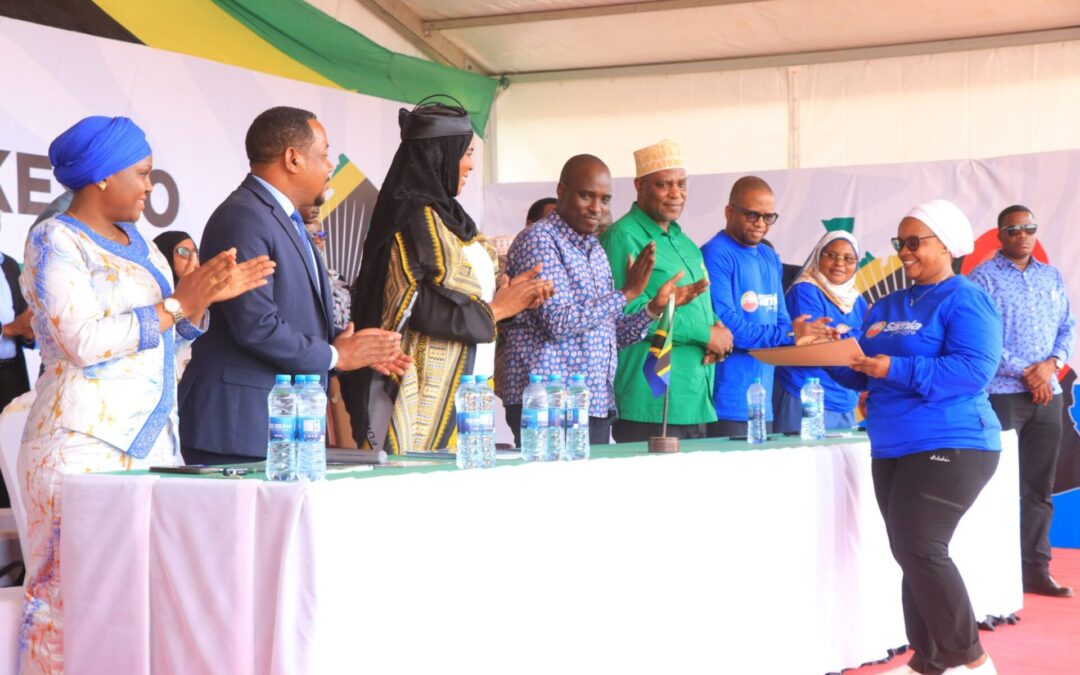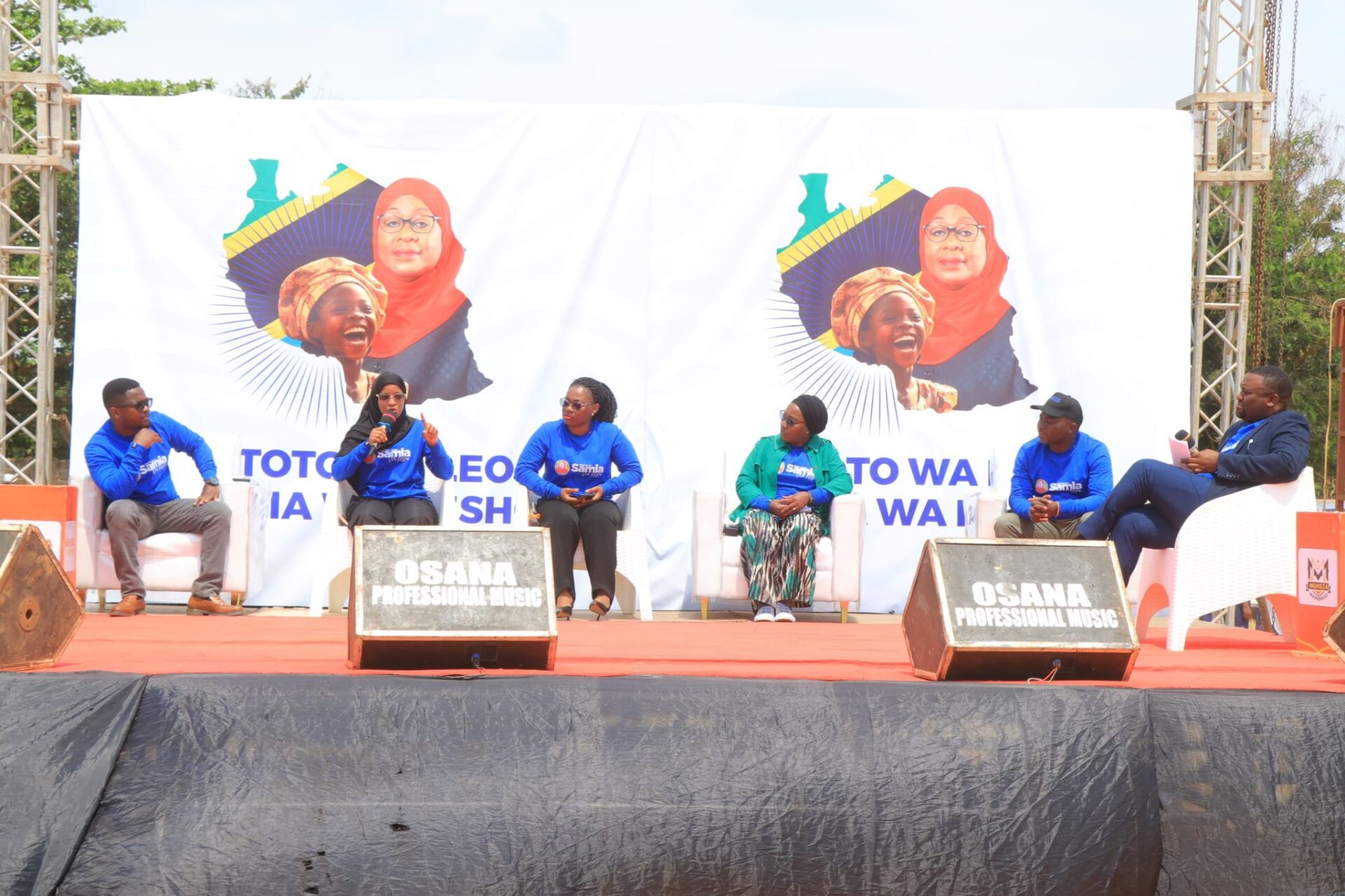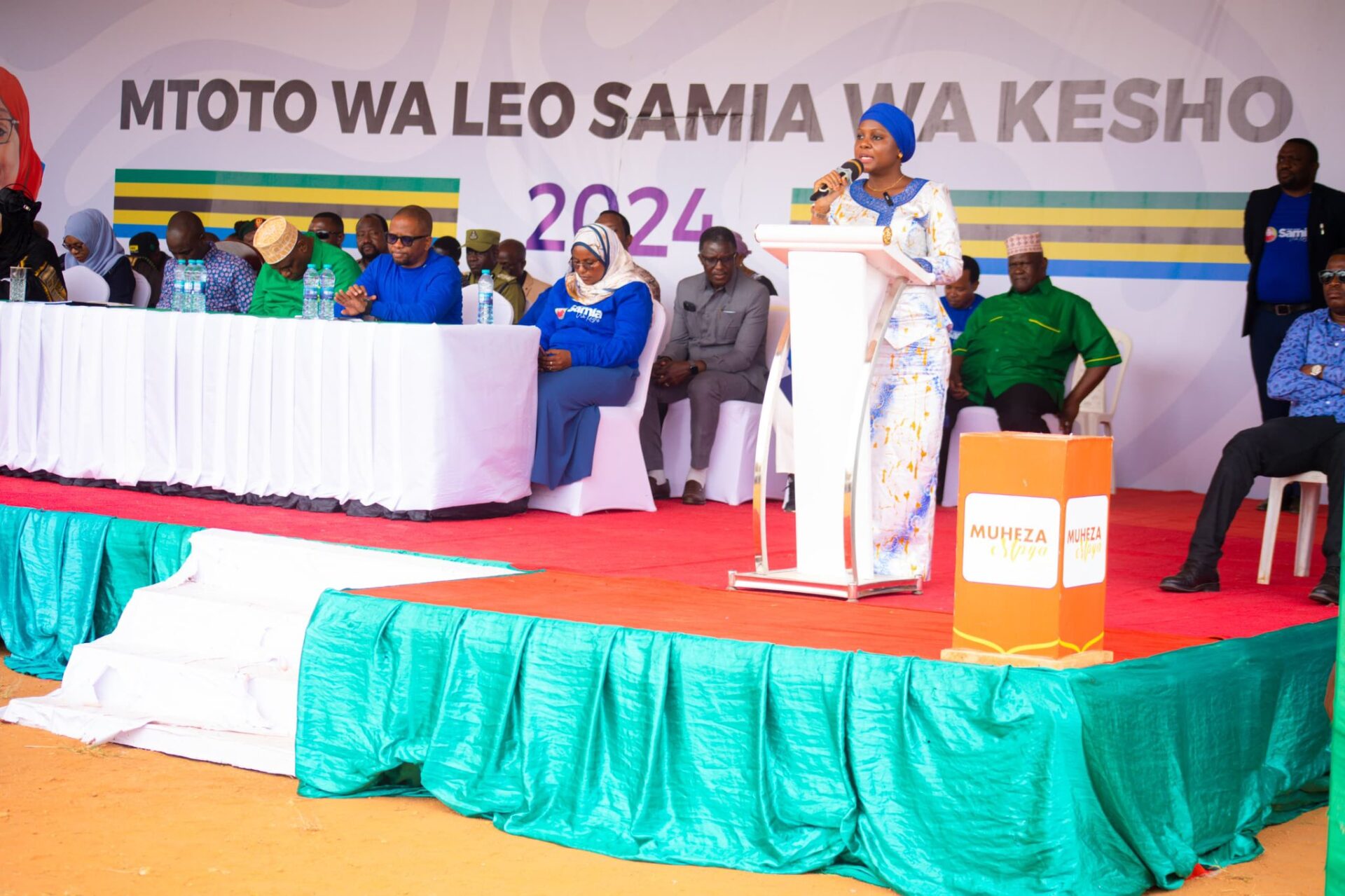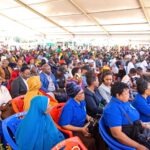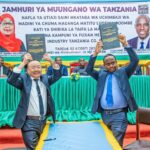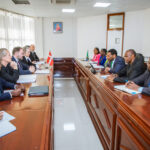Over 6.7 Billion Shillings Allocated for Education Infrastructure
Since the inception of the sixth phase of government under the leadership of President Samia Suluhu Hassan, the Muheza district in the Tanga region has witnessed a notable influx of investment in the field of education. This has resulted in the allocation of over 6.7 billion shillings for the construction of 10 new secondary educational institutions.

This investment represents the government’s commitment to enhancing access to quality education for all Tanzanians. The construction of new educational facilities will assist in alleviating overcrowding in existing schools and provide students with a more conducive learning environment.
It is anticipated that the construction of the new schools will be completed by the end of 2023. Upon completion, the schools will have the capacity to accommodate over 5,000 students.
The allocation of 6.7 billion shillings for educational infrastructure in Muheza district serves as a clear indication of the government’s commitment to enhancing the quality of education in Tanzania. This investment will facilitate access to education for all Tanzanians, thereby enhancing their capacity to succeed in life.
Addressing Education Gaps
The construction of these educational facilities has been strategically planned, with ten of the thirteen wards in the district now having access to secondary education. Previously, students in these areas were required to traverse considerable distances to reach educational establishments, which had a detrimental impact on their academic performance.
The construction of schools in closer proximity to students’ residences has effectively reduced the barriers to education and enhanced accessibility for all. This has resulted in an increase in enrolment and an improvement in attendance rates. Furthermore, the new schools have furnished students with access to superior facilities and resources, which has contributed to enhanced learning outcomes.
The construction of these schools represents a significant step towards the resolution of the educational deficit that exists within the district. By ensuring that students have access to a quality education, the district is facilitating the creation of a more equitable and prosperous future for all.
Official Launch and Recognition
The inauguration of the “Today’s Samia Wa Keso’s Child Campaign” signified the formal introduction of these educational facilities. The objective of the campaign is to:
* Identify talented children
* Support children with disabilities
The event was attended by the Deputy Prime Minister and Minister of Energy, the Honourable Dr. Doto Biteko, who was present in the capacity of guest of honour.
This high-level recognition serves to highlight the significance of the campaign and the dedication to enhancing the lives of children in Tanzania.
Emphasis on Strengthening Education
* The government has identified the enhancement of the education system as a key priority.
Teacher Training
* Initiatives are currently being implemented with the objective of providing teachers with comprehensive training.
* The objective of this training is to enhance the skills, knowledge and pedagogical approaches of the participants.
Provision of Housing for Educators
* The government acknowledges the necessity of providing suitable accommodation to promote the well-being of teaching professionals.
* The construction of residential properties for educators is being pursued with the objective of guaranteeing them a stable and comfortable living environment.
Expected Outcomes
* The objective is to enhance teacher productivity and innovation.
* The results demonstrated an improvement in student learning outcomes.
* The education sector will be strengthened and become more vibrant as a whole.
Progress and Collaboration
The Honourable Katimba expressed gratitude to Muheza Member of Parliament, Honourable Hamis Mwinjuma, for his collaboration with various stakeholders in the establishment of a school comprising six classrooms, sanitary facilities, and an administrative office in Magoroto ward. It is anticipated that the school will be operational by 2025.
Collaboration and Partnerships
* The Honourable Mwinjuma collaborated with a number of key stakeholders in order to facilitate the realisation of this educational establishment.
* The identity of the stakeholders involved is not explicitly stated within the provided context.
Impact of the School
* The educational establishment will facilitate access to learning for students residing in the Magoroto ward.
* It is anticipated that the educational establishment will commence operations in 2025.
* It is unclear how many students will ultimately benefit from the school.
Recognition and Appreciation
* The Honourable Katimba acknowledged and commended the efforts of the Honourable Mwinjuma.
* The dedication of Hon. Mwinjuma to enhancing educational opportunities within his constituency is underscored.
Additional Information
* The name of the educational establishment in question is not provided in the context of this discussion.
* The precise geographical position of Magoroto ward within the Muheza constituency is not indicated.
Infrastructure and Innovation
Infrastructure is defined as the basic physical and organisational structures and facilities (e.g. buildings, roads, bridges, transportation and communication systems, health and education facilities, water and power supplies) that are required for the operation of a society or enterprise.
Innovation can be defined as the process of transforming an idea or invention into a tangible product or service that offers value to customers and is capable of generating revenue. An idea is only deemed an innovation if it can be replicated at an economical cost and if it satisfies a specific need. Innovation can be defined as the deliberate application of information, imagination and initiative in deriving greater or different values from resources. It encompasses all processes by which new ideas are generated and converted into useful products. In the context of business, innovation frequently emerges when organisations apply novel ideas with the objective of enhancing customer satisfaction.
Infrastructure and innovation are pivotal elements in the advancement of economic development. Infrastructure provides the foundation for economic activity, whereas innovation is a key driver of economic growth. Investment in infrastructure and innovation has the potential to result in increased productivity, enhanced competitiveness and the creation of new employment opportunities.
In the context of the aforementioned quote, the Honourable Katimba is urging the community to safeguard the recently constructed infrastructure and encouraging educators to adopt innovative pedagogical approaches. This is because infrastructure and innovation are fundamental to the development of the community and its future leaders.
The following paragraphs present a number of illustrative examples of the ways in which infrastructure and innovation can be harnessed to promote mutual understanding and facilitate the emergence of future leaders.
Infrastructure can facilitate access to education and healthcare, which are fundamental for developing the competencies and expertise required for effective leadership.
* Innovation can be employed to develop novel pedagogical approaches that are more engaging and efficacious, which can assist students in learning more effectively and developing their critical thinking abilities.
Infrastructure can facilitate connections between individuals, enabling the exchange of ideas and the potential for the development of new innovations and solutions.
Furthermore, innovation can be employed to develop new technologies that facilitate learning and growth, such as online learning platforms and educational games.
By allocating resources to infrastructure and innovation, we can establish a more conducive and engaging environment for learning and growth, which will facilitate comprehension and cultivate future leaders.
Growth in Education
In his report, the Honourable Mwinjuma outlined the construction of 212 classrooms over a three-year period, expressing gratitude for the government’s support. He underscored the transformative impact of these investments on the educational landscape of Muheza district.
The expansion of educational infrastructure has been a significant aspect of the government’s educational policy.
The construction of 212 classrooms has led to a notable expansion of the educational infrastructure in Muheza district. The addition of these new classrooms has augmented the capacity of schools to accommodate a greater number of students, thereby alleviating overcrowding and enhancing the overall learning environment.
Improved Access to Education:
The augmented number of classrooms has enhanced accessibility to education for students in Muheza district. Previously, a considerable number of students were unable to attend school due to a lack of available space. The introduction of additional classrooms has enabled a greater number of students to enrol in school, thereby facilitating their access to a quality education.
Improved learning outcomes have been observed.
The new classrooms facilitate a more conducive learning environment for students. The classrooms are illuminated by natural light and artificial sources, and are equipped with modern teaching aids. The enhanced learning environment has a favourable effect on student engagement and academic performance.
The project has also had a positive impact on the empowerment of the local community.
The construction of new classrooms has had a positive impact on the community of Muheza district. Such actions demonstrate the government’s commitment to investing in education and improving the lives of its citizens. This investment in education will have a long-lasting impact on the community, as it will facilitate the creation of a more educated and skilled workforce.
Acknowledgement of Government Support:
Hon. Mwinjuma expressed gratitude for the government’s assistance in the construction of the new classrooms. This support has enabled the Muheza district to make significant progress in improving access to education and enhancing the quality of education for its students.
Call for Continued Support
The Honourable Dr Biteko, a highly regarded figure within the community, exhorted the residents to maintain their active involvement in the protection of the recently constructed educational facilities and other infrastructure. He placed particular emphasis on the vital importance of teachers in embracing innovative pedagogical approaches. In doing so, they could facilitate student empowerment and contribute to the development of future generations, thereby nurturing the potential of the “Samia of tomorrow.”
Tanzania Media
- Kanyala Ferry Launch: TEMESA’s New Service for 15,000 Sengerema Residents (Mwanza) - 18 August 2025
- Russia-Tanzania Naval Cooperation: How the Smolny Training Ship Boosts Dar es Salaam’s Maritime Security - 18 August 2025
- Tanzania’s ICGLR Commitment: Stabilising the DRC & Great Lakes Region - 18 August 2025

